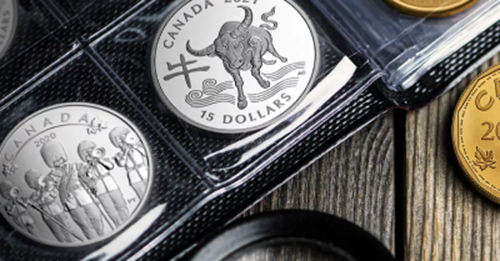It’s All in The Numbers | Why Some Collectors Look at Mintage
- Apr 06, 2025
- Learn
- 3 minutes read
To be part of an exclusive club or to be among a few people worldwide to own a rare or collectible is a special feeling. The sentiment has no boundaries and is even shared by many in the world of coin collecting.
Coins, with their very tangible connection to history, unique design and intrinsic metal value, have been highly sought-after for millennia. Their appeal and our attraction to them is sometimes further enhanced by yet another feature —their mintage.


To be part of an exclusive club or to be among a few people worldwide to own a rare or collectible is a special feeling. The sentiment has no boundaries and is even shared by many in the world of coin collecting.
Coins, with their very tangible connection to history, unique design and intrinsic metal value, have been highly sought-after for millennia. Their appeal and our attraction to them is sometimes further enhanced by yet another feature —their mintage.
What is A Coin Mintage?
Simply put, a coin’s mintage is the maximum number of coins that can be produced by a mint during a specific time. A mintage can range from as low as 1 to 100,000 or more — and once the mintage is reached, the mint will not produce any more. The lower the mintage, the rarer the coin is perceived to be.
It’s important to note that mintages are generally set for numismatics coins as well as some commemorative circulation coins. Gold, silver and platinum bullion coins as well as Canadian circulation coins do not have fixed mintages and are produced according to market demands.
It’s one of a kind!
Imagine the immense pride and personal satisfaction of being one of 50 people in the world to own a particular coin! Take, for instance, the lucky few who own the Lunar Year of the Snake 1-kilo Gold Coin.
But it’s not just collectors who can experience this joy. Picture gifting the Celebrate Love fine silver coin to a friend or loved one to celebrate their wedding day, a special anniversary or occasion like Valentine’s Day. With only 20,000 available worldwide, this keepsake makes for an extra special gift.
How Many Coins Exist?
This is the mystery that lies within each mintage. The mintage, which is typically printed on a certificate that comes packaged with the coin, only states how many coins can be produced (maximum mintage), not what has been produced or what may still exist today. This means that, if a coin was not produced to its maximum mintage or if it was sold and melted down for its metal value via the secondary market, then there may be even fewer coins in existence.
Setting a Mintage
Whether low or high, establishing a mintage on collector coins limits the availability of a coin, which creates a degree of exclusivity (either rare if the mintage is low, or a “limited-edition” if the mintage is relatively high). This exclusivity, along with attributes such as composition, use of innovation and finishes, and complexity of the design, the theme and whether the coin is part of a new or existing collection or series, drives the collector appeal of a numismatic coin. Together, they help define a coin’s retail pricing, which is based on much more than simple metal content.
While mintage is a factor considered by collectors seeking to acquire new coins, there are a number of other features and characteristics that come into play, which you can learn more about in our Get Started guide. Which factor is THE most important? That’s for you to decide and consider based on your unique circumstances, tastes and preferences — happy collecting!



